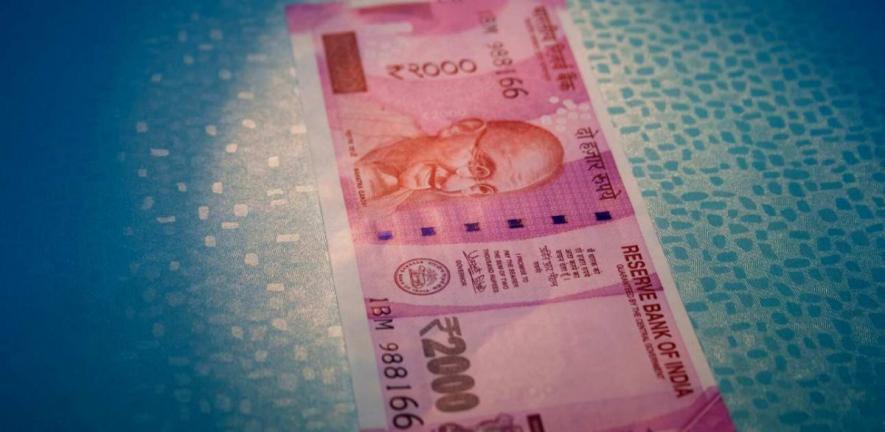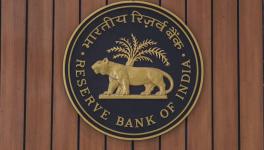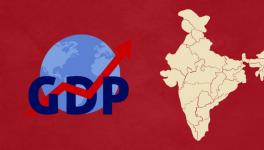Withdrawal of ₹2,000 Notes: Mistakes Repeated are Costly

Representational Image.
It is the process of black income generation that needs to be taken out, not high denomination currency notes.
—
The Reserve Bank of India’s (RBI) announcement of withdrawal from circulation of the ₹2,000 currency notes has caused much incredulity. Tamil Nadu Chief Minister M.K. Stalin quipped, “500 doubts, 1,000 mysteries and 2,000 blunders”, and Rajya Sabha member P. Chidambaram said, “Demonetisation has come full circle”. The Union government has distanced itself from the decision by letting the RBI announce it.
Whether a denomination of currency notes can be withdrawn through executive fiat or passed through Parliament remains an open question. The RBI governor has assured the public that it will face no problems, unlike in 2016.
Old justification again
Why was this step required now? At the time of demonetisation in November 2016, an urgency was expressed regarding rooting out black money, terrorism and counterfeit currency. Some from the ruling dispensation have surprisingly advanced the same three reasons for the present step. The last time, it was quickly realised that these goals cannot be fulfilled by demonetisation. So, the goalpost was shifted within 15 days of the announcement, to claim that it would lead to a “cashless” economy. When this author pointed out that becoming cashless would take time, the argument was changed to making the economy “less cash”.
Far from becoming a less-cash economy, the currency in circulation has increased from around ₹18 lakh crore in November 2016 to the present level of about ₹35 lakh crore. In 2016–17, the Gross Domestic Product (GDP) was ₹152 lakh crore. Now it is estimated to be around ₹300 lakh crore. So, cash to GDP percentage has changed from 11.84 to 11.67. By the end of this financial year, the two figures will be almost the same. So, this ratio, which represents the extent of use of cash in the economy, has hardly changed in spite of the much greater use of online banking, payments and financial transactions.
How much cash is used by people depends on historical, social and behavioural factors. Small businesses, farmers and workers in the unorganised sector find it convenient to transact in cash. These habits change slowly. Not just in India, but even globally, digitisation is advancing as financial literacy spreads and people realise the ease of transacting. Demonetisation was not required to expedite this change.
Not just in India, but even globally, digitisation is advancing as financial literacy spreads and people realise the ease of transacting. Demonetisation was not required to expedite this change.
Further, the unchanged cash-to-GDP ratio suggests that in spite of technological changes, habits are changing slowly. In fact, because a significant portion of the young who understand technology have shifted to using electronic means, the rest must be using more cash for the ratio to remain unchanged.
Further, cash to GDP ratio is no indication of corruption or how large the hoard of black cash may be. This ratio is found to differ across countries due to differences in social and cultural practices. For Sweden and Nigeria, this ratio is around 1 percent while for Japan, it is 18 percent. In terms of corruption, Nigeria is not comparable to either Sweden or Japan.
Black economy will not be impacted
Cash is a part of the portfolio of assets and since it does not earn interest, it constitutes a tiny fraction of the total— about 1 percent of black wealth. So, even if the entire amount of black cash could be squeezed out, it will hardly dent black wealth.
Critically, even if black cash is demobilised, it will have no impact on the process of black income generation via under- and over-invoicing, among other means. This process does not stop with removal from circulation of high denomination currency notes. Illegal transactions can be carried out in a variety of ways, such as through bribes given via electoral bonds, under-valued assets, or payments made abroad.
Given that demonetisation in 2016 did not deliver on the goals set out for it, why are policymakers repeating the same mistake? If black income generation in the country had declined, more incomes would have been declared to tax authorities, and the tax-to-GDP ratio and more specifically the direct tax-to-GDP ratio would have risen sharply. This has not been the case, with these ratios hovering around 16.5 percent and 5.5 percent respectively. Terrorism persists and fake currency is being detected all the time.
Thus, neither digitisation nor removal of high denomination currency has impacted the black economy— either black wealth or black income generation. Globally, digitisation has facilitated black income generation with ever-growing cybercrime and international crime. In India, banks, both foreign or indigenous, have been caught facilitating hawala and illegal transactions in spite of Know Your Customer requirements.
When demonetisation, the much bigger and brutal exercise, was not successful in taming the black economy, how would the present step do it? The policymakers cannot be blind to all this. If they are knowingly carrying out this step, their motive has to be political and not economic.
Impact on the economy
The present step will not be costless since it will impact the economy. A temporary shortage of cash will ensue as people and establishments largely stop using the ₹2,000 note in transactions. The ₹500 notes will get used instead. Since 10.8 percent of currency in circulation is being withdrawn, the demand for ₹500 notes will shoot up, but their availability cannot increase suddenly leading to a shortage, in spite of the RBI governor’s assurance.
If black income generation in the country had declined, more incomes would have been declared to tax authorities, and the tax-to-GDP ratio and more specifically the direct tax-to-GDP ratio would have risen sharply. This has not been the case, with these ratios hovering around 16.5 percent and 5.5 percent respectively.
Any shortage will propel hoarding of these notes and rapid withdrawal from banks. More than what is currently needed shall be withdrawn as queues form at banks— not only to exchange the ₹2,000 notes, but also for security. Even the organised sector that can use online money transfers needs cash. So, across the economy, the demand for ₹500 notes will rise.
Money is held for a variety of reasons— to carry out transactions, as a precaution to meet unexpected demand, or for speculation to seize an opportunity to make a quick buck. Money is not just cash, but also held in the banks as deposits that can be used to transact. As more cash may be withdrawn than the amount of ₹2000 notes deposited, money creation would slow down, leading to a shortage of money for transactions. That would impact production and income generation.
During demonetisation in 2016, markets shut down, the footfall in shops declined, and production got hit.
Most of the ₹2000 notes would be with the well-off for precautionary reasons, or with businesses and farmers as working capital. Hardly a few thousand individuals and businesses would hold substantial amounts of black money. Since all notes are being allowed to be deposited with little additional paperwork, all of the black hoards will also get converted.
Of course, the disruption will be far less than in 2016, when 85 percent of the currency was withdrawn suddenly. Now only 10.8 percent is being withdrawn. Some argue that liquidity with the banks will increase, and that will help. This is incorrect because withdrawals are likely to be more than 10.8 percent of the currency, and so many ₹500 notes cannot be printed overnight. People will not be able to use the ₹2000 notes for transactions since few will accept them. Further, people will try to save the ₹500 notes and not spend on discretionary expenditures. So, output is likely to decline, even if temporarily, especially for micro and small units. Goods and Services Tax collection will decline as transactions are impacted.
Withdrawals are likely to be more than 10.8 percent of the currency, and so many ₹500 notes cannot be printed overnight. People will not be able to use the ₹2000 notes for transactions since few will accept them. Further, people will try to save the ₹500 notes and not spend on discretionary expenditures. So, output is likely to decline, even if temporarily, especially for micro and small units.
Worse, if the credibility of the currency is dented— there may be fear that even the ₹500 notes may be withdrawn sometime— then people will start to shift towards gold, dollars and balances held abroad. This would be adverse for the national economy.
Conclusion
The limit of exchange has been set at ₹20,000 a day, while larger sums can be deposited. But most may not like to deposit big sums lest they get queries from the income tax department. The exchange of notes may lead to approximately 10 crore additional transactions in banks. Many people will have to go multiple times. Further, like last time, cash mules— the poor— will be deployed to go to the banks to convert the notes. Corruption may also increase in this process as businesses which have considerable cash dealings may change notes for a fee.
In brief, it is the process of black income generation that needs to be taken out, not high denomination currency notes.
Arun Kumar is a Retired Professor of Economics at the Jawaharlal Nehru University.
Get the latest reports & analysis with people's perspective on Protests, movements & deep analytical videos, discussions of the current affairs in your Telegram app. Subscribe to NewsClick's Telegram channel & get Real-Time updates on stories, as they get published on our website.
























